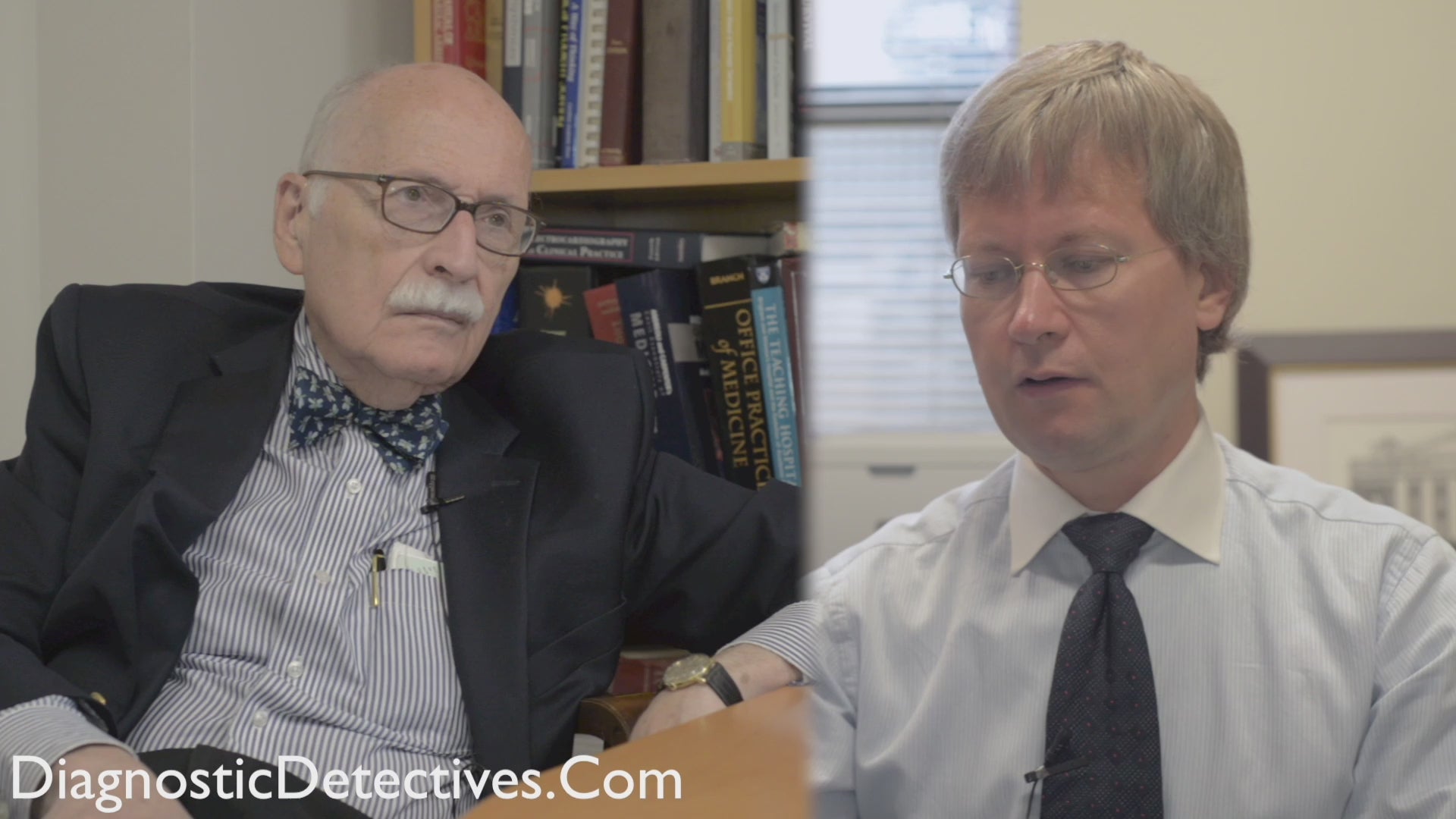O renomado especialista em medicina clínica e educação médica, Dr. Marshall Wolf, MD, destaca o papel fundamental do médico na assistência à saúde moderna. Ele enfatiza a primazia do Método Clínico sobre a tecnologia, detalhando um processo diagnóstico passo a passo que tem início na interação humana. O Dr. Wolf defende uma abordagem equilibrada, na qual a tecnologia serve ao julgamento clínico, sem substituí-lo. Esse método assegura diagnósticos precisos e preserva o cuidado compassivo ao paciente.
O Método Clínico: Uma Abordagem Centrada no Ser Humano para o Diagnóstico Médico Moderno
Ir para a Seção
- O Elemento Humano na Medicina
- O Método Clínico Explicado
- O Papel Adequado da Tecnologia no Diagnóstico
- Erros Diagnósticos Comuns a Evitar
- Um Exemplo Prático de Diagnóstico
- Transcrição Completa
O Elemento Humano na Medicina
O Dr. Marshall Wolf, MD, inicia destacando o aspecto humano central no cuidado ao paciente. Ele observa que os pacientes frequentemente chegam assustados ou em negação sobre seus problemas de saúde. O primeiro dever do médico é reconhecer e acolher esse estado emocional. Essa conexão humana forma a base de todo o processo diagnóstico e de tratamento.
O Método Clínico Explicado
O Dr. Marshall Wolf, MD, apresenta o Método Clínico como a pedra angular da prática médica eficaz. Esse processo sistemático começa com a queixa principal e o histórico do paciente. O médico então formula hipóteses diagnósticas com base na história inicial. Um exame físico direcionado segue, ajudando a refinar essas possibilidades. O método prioriza o pensamento crítico e a perspicácia clínica antes de recorrer a qualquer tecnologia.
O Papel Adequado da Tecnologia no Diagnóstico
O Dr. Marshall Wolf, MD, esclarece que a tecnologia não é inimiga da boa medicina, mas sim uma ferramenta poderosa. Ele ressalta que ela oferece soluções que eram inimagináveis décadas atrás. Seu uso correto ocorre após o Método Clínico ter delimitado as possibilidades diagnósticas. A tecnologia deve ser empregada para confirmar ou descartar condições específicas identificadas por meio da anamnese e do exame físico. Isso garante que os exames sejam direcionados, eficientes e medicamente necessários.
Erros Diagnósticos Comuns a Evitar
Um erro crítico que muitos médicos cometem é inverter a sequência diagnóstica adequada. O Dr. Wolf observa que alguns clínicos partem diretamente da queixa principal para solicitar exames. Essa abordagem centrada primeiro na tecnologia é invertida e pode levar a erros diagnósticos e procedimentos desnecessários, pois ignora as etapas essenciais de geração de hipóteses e exame clínico. O Dr. Anton Titov, MD, e o Dr. Marshall Wolf, MD, concordam que o raciocínio deve sempre preceder o uso de aparelhos.
Um Exemplo Prático de Diagnóstico
O Dr. Marshall Wolf, MD, oferece um exemplo concreto para ilustrar seu ponto. Quando um paciente apresenta dor torácica, o diagnóstico diferencial pode incluir pneumonia ou dor na parede torácica. Muitas vezes, um exame físico consegue diferenciar entre essas condições sem qualquer imagem. Se a incerteza persistir, uma radiografia de tórax simples pode ser o próximo passo apropriado. Isso contrasta fortemente com solicitar imediatamente exames avançados como tomografia computadorizada (TC) ou ressonância magnética (RM), que frequentemente são desnecessários.
Transcrição Completa
Dr. Anton Titov, MD: Um dos objetivos deste projeto é destacar a primazia e o valor dos humanos na medicina. Nosso objetivo é oferecer a antítese à percepção crescente do público de que os médicos se tornaram meros servos da tecnologia.
Como você enxerga o lugar do médico no mundo atual, impulsionado pela tecnologia? Como promover o valor da humanidade e da compaixão na medicina moderna? Como fazer o público entender esse valor?
Dr. Marshall Wolf, MD: Você está levantando duas questões. Um tópico é o aspecto humano. É importante prestar atenção ao que o paciente está passando emocionalmente quando você o atende.
A verdade é que eles podem estar assustados. Podem estar em negação profunda ao lidar com seu problema.
A segunda questão é o equilíbrio entre a medicina clínica tradicional e a nova tecnologia. Eu não as vejo como concorrentes. Estou na área há muito tempo. Vi a nova ciência e a tecnologia oferecerem aos pacientes algo que eu não poderia ter proporcionado quando comecei na medicina.
Vi a tecnologia ajudar a curar ou auxiliar pacientes. Acho que o importante é o seguinte: a primeira tarefa do médico, quando um paciente chega, é decidir: "O paciente está doente ou não?"
Às vezes, os pacientes se preocupam com algo que não é muito sério. Que não representa um risco à saúde. Você precisa discernir isso.
Então, uma vez que decide que há um problema, deve usar a anamnese para tentar entender o que está acontecendo. Gosto de falar sobre o Método Clínico.
O paciente chega com uma queixa. Você ouve a história dele. Então formula várias hipóteses sobre o que pode ser.
Em seguida, conversa mais com o paciente para tentar definir essas hipóteses. Com base nelas, faz um exame físico direcionado. Isso pode alterar suas suspeitas.
Então, com base na anamnese e no exame físico, você conclui: "Estou considerando A, B e C." Esse é o momento de recorrer à tecnologia para tentar esclarecer: "É A, B ou C?"
O problema é que muitos médicos começam pelo caminho errado. O paciente relata a queixa principal, e os médicos já partem para os exames tecnológicos.
Essa é a maneira invertida de fazer as coisas. O correto é pensar primeiro e usar os aparelhos depois.
Por exemplo, para saber se o paciente tem pneumonia ou dor na parede torácica, uma radiografia pode ser útil se o exame físico não for conclusivo. Para esse problema, geralmente não é necessário fazer TC ou RM.
Muitas vezes, com um exame físico adequado, é possível diagnosticar pneumonia sem precisar de radiografia de tórax.





